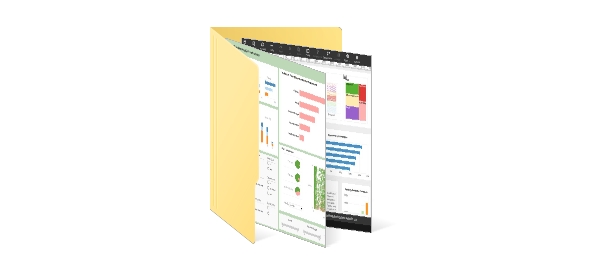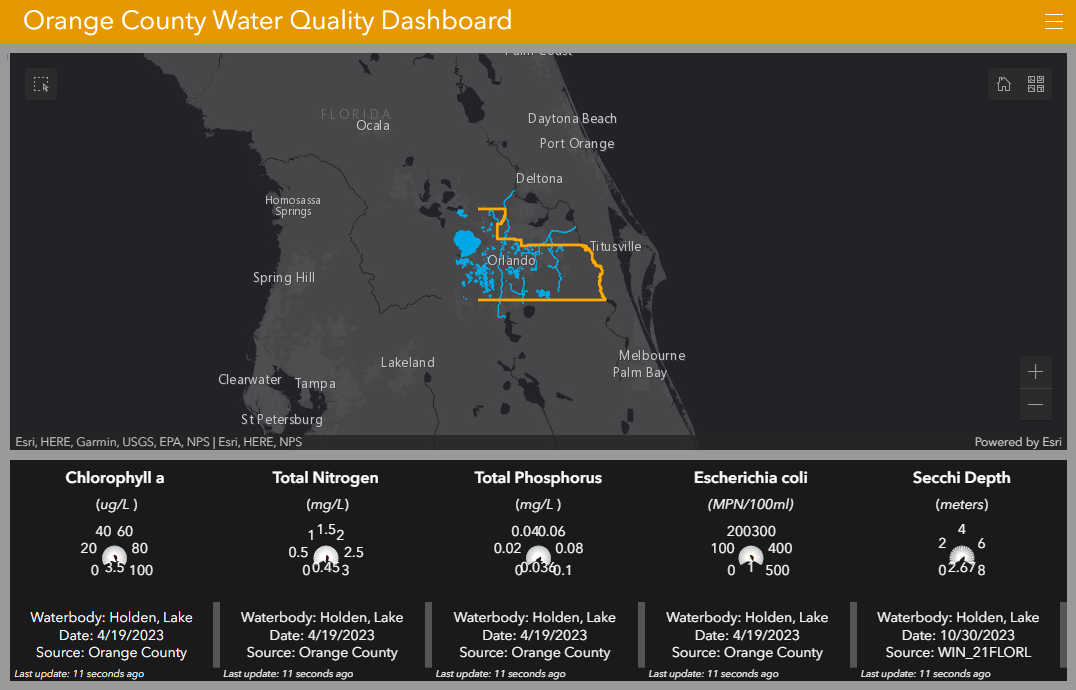What KPIs and Analytics Are Used on a Water Treatment Plant Dashboard?
In order to guarantee that populations get clean, safe water, water treatment facilities are essential. These facilities use analytics and key performance indicators (KPIs) on their dashboards to monitor, optimize, and enhance their operations as technology develops.
This article discusses water treatment plant dashboard KPIs and analytics, highlighting efficiency and reliability tools.
| #1 Ranking: Read how InetSoft was rated #1 for user adoption in G2's user survey-based index | Read More |
Water Quality Metrics
A collection of KPIs for tracking water quality are the fundamental components of any dashboard in a water treatment facility. To make sure the water satisfies regulatory requirements, parameters including turbidity, pH levels, dissolved oxygen, and chemical concentrations are essential. Plant operators can quickly spot abnormalities and take remedial action to ensure water quality when these parameters are monitored in real-time.
Treatment Efficiency
KPIs pertaining to treatment efficiency provide valuable information about the efficacy of the plant's water purification process. Measures including organic matter, virus, and bacterium clearance rates are used to assess how well the treatment methods are working. Analyzing treatment efficiency KPIs helps to make water treatment operations more economical and sustainable by maximizing resource use and reducing waste.
Energy Consumption
Since the process of treating water uses a lot of energy, it is important to keep an eye on how much is being used, both economically and environmentally. Plant operators are assisted in identifying opportunities for energy reduction by KPIs relating to energy utilization, such as kilowatt-hours per million gallons processed. Determining the most energy-efficient operating conditions may be aided by analytics on energy trends over time, which can save operating costs and have a positive environmental effect.
Equipment Health and Maintenance
For the factory to continue operating, its equipment must be kept in good working order. KPIs that monitor the state of filters, valves, pumps, and other important parts might reveal possible problems before they happen. Predictive maintenance analytics reduces downtime and prevents expensive repairs by scheduling maintenance tasks proactively using data on equipment performance and past failure trends.
Compliance Monitoring
To protect the public's health and safety, water treatment facilities are subject to stringent regulations. The proportion of time the facility meets or exceeds water quality criteria is one of the most important KPIs for regulatory compliance. By allowing preemptive actions to resolve possible concerns and maintain a high level of regulatory conformity, analytics in this sector assist plant operators in identifying trends and patterns in compliance data.
Operational Efficiency
Efficiency in operations KPIs concentrate on the overall efficiency of plant operations. The ratio of treated water to resources used, throughput rates, and capacity utilization for water treatment are a few examples of these indicators. This type of analytics offers a thorough picture of the plant's performance, enabling managers to spot bottlenecks, simplify procedures, and allocate resources optimally for increased productivity.
Resilience and Contingency Planning
Water treatment facilities must be able to withstand unforeseen circumstances like equipment breakdowns or natural catastrophes. This category's KPIs and analytics evaluate the plant's emergency response capabilities. Important insights may be gained from metrics such as the efficacy of contingency plans and the reaction time to severe failures. Using analytics to proactively monitor and modify backup plans improves the plant's overall robustness and dependability.
Water Distribution Metrics
KPIs pertaining to water distribution, in addition to the treatment process, are essential in guaranteeing that clean water reaches end customers. It's critical to keep an eye on the integrity of the distribution network, water pressure, and flow rates. Analytics in this field assist in locating any leaks or pressure problems, enabling prompt remedial action to reduce water loss and maximize distribution efficiency.
 |
Learn about the top 10 features of embedded business intelligence. |
Cost and Budget Performance
For the facility to remain sustainable, managing the financial side of water treatment operations is essential. Plant managers can clearly see how economically efficient their operations are by looking at KPIs pertaining to budget variations, cost per unit of treated water, and overall financial performance. This type of analytics helps find places where expenses may be minimized without sacrificing the quality of water treatment.
Customer Service Metrics
Customer service indicators are becoming more important even though they haven't always been connected to water treatment, as water companies work to improve customer happiness. KPIs pertaining to customer satisfaction, communication efficacy during water-related crises, and reaction times for service requests are crucial. By matching operations to customer expectations, this kind of analytics helps water treatment facilities build strong relationships with the communities they serve.
Chemical Usage Efficiency
It's critical to track chemical consumption efficiency if you want to keep expenses down and protect the environment. KPIs pertaining to the dose of disinfectants, flocculants, and coagulants per treated unit of water provide valuable information on how well chemical treatment procedures work. In order to meet water quality requirements while using the fewest amount of chemicals possible, analytics in this field aid in determining the best chemical doses.
Sedimentation and Filtration Effectiveness
In the process of treating water, sedimentation and filtration are crucial steps. KPIs monitoring filtration rates and sedimentation basin performance are useful in determining how well these important processes are working. Analytics in this field can spot patterns in filter performance and sedimentation basin efficiency, allowing for preventive maintenance and treatment step optimization.
 |
Read the top 10 reasons for selecting InetSoft as your BI partner. |
Water Source Quality Monitoring
The treatment procedure is directly impacted by the source water's quality. KPIs for source water quality, such as raw water turbidity and contaminant levels, may be used to predict treatment process difficulties before they become serious problems. This field of analytics helps to comprehend the variability of source water quality, which enables modifications to treatment procedures to adapt to changing circumstances.
Laboratory Testing Turnaround Time
Water quality criteria must be maintained, which requires prompt examination of sampled water. KPIs that monitor the turnaround time for laboratory testing provide valuable information about how well the testing and analysis procedures are working. This type of analytics may spot bottlenecks in the testing process and guarantee that plant operators have timely access to information for well-informed decision-making.
Carbon Footprint Metrics
Measuring the carbon footprint of water treatment processes is becoming more and more important as sustainability gains traction. KPIs for greenhouse gas emissions per treated water unit are useful in evaluating how plant operations affect the environment. This area of analytics contributes to the overall sustainability objectives of the water treatment plant by supporting efforts to lower carbon emissions.
Asset Utilization
Monitoring the whole use of assets, such as treatment units, pumps, and storage facilities, is crucial in addition to equipment health. Asset utilization rate-related KPIs assist detect underused or overused assets and provide insights into the effectiveness of resource allocation. Strategic planning for asset maintenance, improvements, or decommissioning is supported by analytics in this area.
Water Age in Distribution Network
The amount of time water spends in the distribution system before it is used is referred to as its "water age." KPIs that monitor water age assist in locating potential stagnation sites for water, which may result in problems with quality. By improving the distribution network's layout and functioning, analytics in this field help guarantee that customers get water that has not significantly degraded in quality.
 |
View the gallery of examples of dashboards and visualizations. |
Cybersecurity Metrics
Ensuring the cybersecurity of water treatment plant systems is crucial in an age of growing connectivity. Cybersecurity-related KPIs, such the quantity of events and reaction times, aid in evaluating how resilient the plant's digital infrastructure is. This type of analytics helps keep cybersecurity defenses up to date while maintaining the integrity of water treatment procedures and protecting against possible attacks.
Training and Certification Compliance
The proficiency of the plant's employees is essential to its seamless functioning. KPIs pertaining to certification compliance and training completion rates are useful in evaluating the workforce's preparedness. Workforce development programs are supported by analytics in this field, which guarantees that plant staff is prepared to manage changing difficulties in water treatment operations.
Community Engagement Metrics
Participating in the community is essential to establishing openness and trust. KPIs pertaining to public education initiatives, outreach to the community, and feedback systems aid in gauging the success of the plant's communication campaigns. This domain's analytics aid in the creation of focused community engagement plans, strengthening the bond between the water treatment facility and the areas it supplies.

